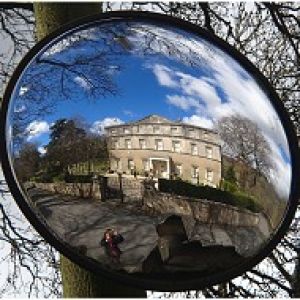Parliament Street, Gloucester
...Is curved because it represents the curve of the former City Walls. Is so named because Gloucester stood for Parliament during the civil wars. The surrounding countryside, and Wales, was Royalist, and Gloucester alone made a stand against the King.
The siege of Gloucester saw the people of Gloucester, around 5,000 of them including men and boys of fighting age, encamped within the city walls for over a month, facing an army of an estimated 35,000 Royalists. Because Gloucester was strategically important to the cause, London sent around 8,000 Parliamentarian fighters to support the cause.
Muskets were fired, as were 8-pound canon balls, and a mediaeval siege engine ( a Humpty Dumpty, as it was nicknamed!) was captured from the Royalists and taken behind the city walls, where it may well have ended up being used as firewood. This photo was taken from Chillingworth Mews, where a plaque marks these events, and states Gloucester's claim to the words of the Humpty Dumpty nursery rhyme. Nottingham claims it, too!
See the explanation here: http://www.historyofwar.org/articles/battles_gloucester.html
The Parliamentarians had access to clean water from several wells, and incidences of sickness and starvation are not recorded. The siege ended in victory for Parliament in September 16...., whereupon the force that come to Gloucester's aid had to gallop back to London to re-enter before the Royalists returned! The siege of Gloucester information : http://www.historyofwar.org/articles/battles_gloucester.html
The people of Gloucester celebrated with free beer all round, then set about rebuilding their damaged city walls. Come the Restoration of the monarchy, the new king ordered the walks to destroyed. This is why Gloucester now has no city walls, which had existed for centuries up until this point. However, the road that now circumnavigates the city takes the same route as the former walls. Old city walls illustration : https://www.bpe.co.uk/why-bpe/blog/2016/06/deconstruction-reimagined/
The stone statue that was erected to Charles II, after the Restoration, stands by a dismal block of 1960s council flats. Obviously the planners had their tongues firmly in their cheeks when they chose the present location!
How do I know all this? I went on a civil war walk around Gloucester led by Jon Eeles. I now see Gloucester in a completely different light.
And why the rubbish photograph? Because my battery ran out!

Comments
Sign in or get an account to comment.


